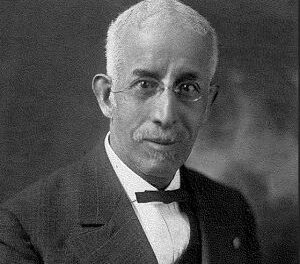The Rocket City keeps booming. The Huntsville metro area, the only large metro in Alabama to see rapid growth last year, passed the 500,000 mark in 2021.
The Huntsville metro area, which includes Limestone and Madison counties at the northern edge of Alabama, added nearly 9,000 people in just one year, from July 1, 2020 to July 1, 2021. That was the most total people added by any Alabama metro area during that time.
That’s according to recently released population estimates for metropolitan statistical areas from the U.S. Census Bureau. The Huntsville growth continues a trend of rapid gains in north Alabama over the past several years, as Florence and Decatur metros also saw modest growth from 2020 to 2021.
As for the other large urban centers in Alabama, the Birmingham-Hoover metro – by far the largest in the state – and the Montgomery metro were essentially stagnant, while the Mobile metro lost population.
“Huntsville, to no one’s surprise, is a growing and vibrant community,” Huntsville Mayor Tommy Battle said in an email to AL.com. “While our population may be the biggest, we will continue working hard to be the best in everything we do. We take pride in our relationships with regional, state and national partners to strengthen our infrastructure and attract more businesses and industries.
“Collaboration helped make the Rocket City what it is today, and we’ll continue to build on our successes moving forward.”
Huntsville City is now the largest city in Alabama, and is the sprawling heart of the larger metro area, but the growth in the region extends beyond the city limits. Limestone County, home to Athens, was the fastest growing county in Alabama from 2020 to 2021, expanding by more than 3%.
However, among metro areas, the Daphne-Fairhope-Foley metro grew by 2.6%, making it the fastest growing in Alabama and the 16th fastest in the United States between 2020 and 2021.
Baldwin County, home to Alabama’s beaches, has been one of, if not the fastest growing area in Alabama for the past decade-plus, and much of that boom has come from people moving from outside of Alabama.
“When looking across Alabama as a sample size, our community has had more net in-migration than any other community out there,” Lawson said.
He said Baldwin County and its many communities have capitalized on opportunities to attract people, even during the pandemic. And he said he expects that to continue, and that the region will be able to bring in what he called “geographic free agents” – people who, in a post-pandemic world, can now live wherever they want while working remotely.
“We’re going to be one of the big winners [after the pandemic],” he said.
Meanwhile, just across the Bay in the Mobile metro area things are trending in the opposite direction. The Mobile metro, which contains Mobile and Washington counties, lost about 1,300 people between 2020 and 2021, or roughly 0.3% of its population. If you take out the Columbus, Ga., metro, which contains Alabama’s Russell County, Mobile’s population loss was the fastest in Alabama.
In the Birmingham-Hoover metro area, the population remained relatively stagnant. The Birmingham-Hoover metro is still the most populous urban center in the state, more than twice the size of fast-growing Huntsville. There are more than 1.1 million people living across the six counties that make up the Birmingham metro, and four of them are growing.
Shelby, St. Clair, Bibb and Chilton counties – all suburban areas to the south and east of Birmingham proper – each grew in 2021, according to the estimates. Shelby and St. Clair grew significantly, each adding thousands of people.
But the population gain in those areas wasn’t enough to offset the large losses in Jefferson County, the most populous county in the state and the hub of the metro area. Jefferson County lost more than 5,500 people in just a year, bringing its total population down to 667,820.
All those forces coming together meant the Birmingham area lost around 450 people – not enough to significantly change the population of the region.
The same is true across the four counties of the Montgomery metro, which added just 60 people in 2021. Like Birmingham, most of the growth in that area was in the suburban counties of Autauga and Elmore to the north.










